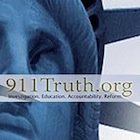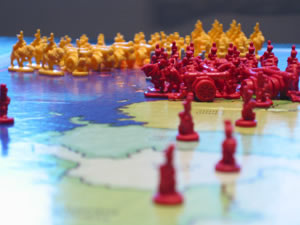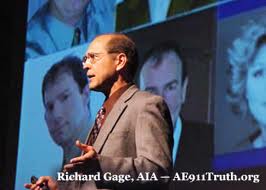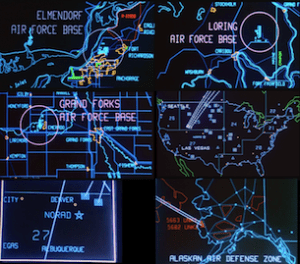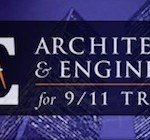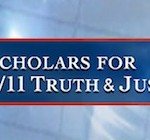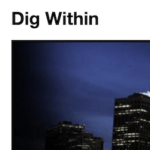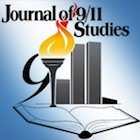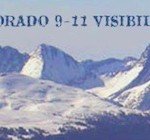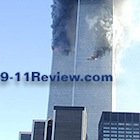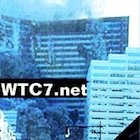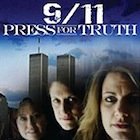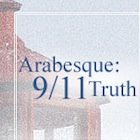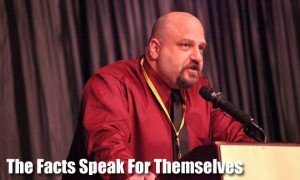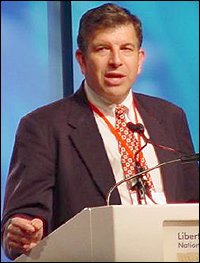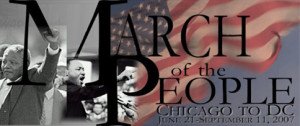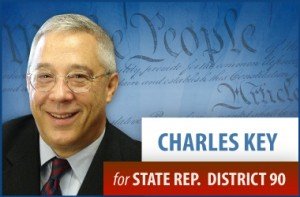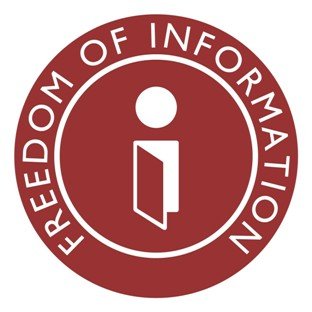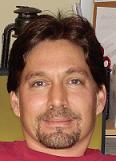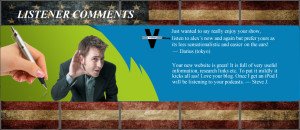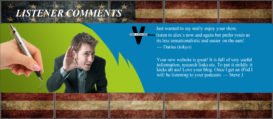Source: 911truth.org
Bryan Sacks
November 28th, 2005
9/11 Commission Executive Director Philip Zelikow has deep, lasting ties to several members of both the Bush I and Bush II Administrations. Any one of these connections could have been deemed sufficient to eliminate Zelikow from consideration on the basis of non-independence. Consider:
- Zelikow was an aide to Brent Scowcroft, National Security Advisor to George H.W. Bush;
- Zelikow was part of the Bush II transition team and worked closely with Condoleeza Rice, George W. Bush’s National Security Advisor. As advisor to Rice, Zelikow would sit in on high-level meetings on the terror threat in early 2001.
- In 1999 Zelikow co-authored a book with Rice, entitled “Germany Unified and Europe Transformed: A Study in Statecraft.“
- Zelikow was appointed to President Bush’s Foreign Intelligence Advisory Board in the aftermath of 9/11.
Despite these connections, Zelikow was appointed Executive Director of the 9/11 Commission in November 2003.1 His intimate relationship with the Bush White House did not end with the publication of the Commission Report. Shortly after departing the Commission he became Counselor of the Department of State, where he would once again work alongside Condoleeza Rice.
There are lesser-known facts about Zelikow’s connections to the Bush Administration that are equally disturbing. For instance, in the early 1990s Zelikow directed the Aspen Strategy Group, members of which have staffed key positions in both the Bush and Clinton Administrations. Interestingly, Judith Miller, the former NY Times reporter implicated in the outing of CIA operative Valerie Plame, is another emeritus member of ASG. I. Lewis ‘Scooter’ Libby, indicted in October 2005 on a total of five counts of obstruction of justice, making false statements and perjury, wrote a cryptic letter to the jail-bound Miller that seemed both to reference Miller’s association with the Aspen Group and to attempt to silence her before she testified before the grand jury:
“Out West, where you vacation, the aspens will already be turning. They turn in clusters, because their roots connect them.”
Several prominent current and former Bush Administration figures are emeritus members of ASG, including Condoleeza Rice, Dick Cheney, Paul Wolfowitz and Richard Armitage. It’s an odd turn of phrase, one that seems to insinuate that to give evidence against Libby might implicate some of these other “aspens.”
Evidence of Bias In Zelikow’s (and the Commission’s) Impartiality
If one wanted to surreptitiously influence the direction of the inquiry, hiring a sympathetic Executive Director would be a good start. As Paul Sperry summarized:
“Though he has no vote, (Zelikow) arguably has more sway than any member, including the chairman. Zelikow picks the areas of investigation, the briefing materials, the topics for hearings, the witnesses, and the lines of questioning for witnesses. . . .In effect, he sets the agenda and runs the investigation.”
Straightforward evidence that Zelikow lacked a desire to explore potentially promising lines of inquiry comes from Thomas Hansen, Ph.D. In the fall of 2004 Zelikow gave two speeches at the University of Virginia at which Hansen was present. Hansen recalls asking Zelikow why the 9/11 Commission did not address the ‘specific conspiracy concerns’ circulating in the public sphere. Hansen wondered “why the Commission would let these concerns go unanswered and cause unnecessary doubt and dissent in the country.” By way of an example, Hansen asked whether Zelikow had seen key evidence that would erase any doubt that a commercial airliner in fact hit the Pentagon, including surveillance videos, rescue workers’ statements and the NTSB report. Zelikow said he had, but that neither Hansen nor any other private citizen could see them. Zelikow added that the NTSB report contained the following information:
…air traffic controllers at Dulles saw on their radar that a plane was approaching, without its transponder turned on, but they could not identify it just by radar. It was not one scheduled to come into Dulles, so they assumed it was landing at Reagan National, and when it dropped off their radar at the Pentagon they knew something was wrong. This was 35 minutes after the second World Trade Center Tower had been hit.
“I told him this explanation defied reason,” Hansen wrote, recalling their exchange, “but he said it is proven in the NTSB Report, which I can’t see.”
Hansen makes clear just how frustrating his exchange was with Zelikow:
“I asked him why he and the Commission and the staff don’t simply release photos and other information to the public so that we can rest assured that the Commission has fully investigated and answered these and other persistent questions. His answer was that the staff, including himself of course as Executive Director, made a conscious decision not to dignify these ‘outrageous conspiracy theories’ by investigating them or reporting on them.” (Hansen, 2005, emphasis mine)
A month later, during a talk Zelikow gave at Middlebury College, there was perhaps some evidence that Hansen’s concern had impacted Zelikow. He was asked whether the Commissioners considered their “role and responsibility in educating a largely ignorant and, some would say, prejudiced American public.”
Zelikow answered that the Commission did feel it had an “enormous educational mission” and wanted very much to produce a readable document. Then, without further prompting, Zelikow launched into a strange riff on the “whole welter of conspiracy theories about 9/11 floating around the internet” that “we are dealing with.” This is surprising, since there was nothing in the question that asked specifically about conspiracy theories.
In his answer, (see time stamp 1:22:00-1:26:30) Zelikow did two rhetorically important things: First, in a gesture of seeming fairness, Zelikow raised the issue of his connections to the White House, saying he could be “read as the plausible henchman executing the coverup,” and that “it’s a legitimate concern.” He is to be commended for taking this risk, since he could not have known who was in the room and what else might have sprung from this admission. But Zelikow does not give this “legitimate concern” a fair hearing. He attempts to dismiss the allegation by claiming there were “81 other staffers keeping their eagle eye on me,” but this claim is disingenuous. Zelikow had clearance to see documents that many other Commissioners did not. He negotiated the terms of disclosure when the White House wanted to shield the Commissioners from sensitive materials. Only Zelikow and Jamie Gorelick, for instance, were permitted to see the confidential pre-9/11 Presidential Daily Briefings.
Further, as one of the Commission Report’s architects, Ernest May, has noted in his memoir of the Commission, Zelikow broke up the staff into eight investigative teams. Zelikow and other members of what May termed the “front office” performed revisions on all drafts submitted by the teams. The front office included Zelikow, May, Deputy Executive Director Christopher Kojm and General Counsel Daniel Marcus.
Thus, in no way was Zelikow truly subject to the scrutiny of 81 staffers, all of whom were below him in rank. An unnamed source on the Commission staff told author Peter Lance that, of the eight teams, only the “New York Team” run by John Farmer had issued subpoenas. “(T)he other teams are completely controlled by Zelikow down in DC . . . Zelikow is calling the shots. He’s skewing the investigation and running it his own way.” (Peter Lance, Cover Up, p. 140).
The source continued, saying “none of the other team leaders talk with the Commissioners (other than Farmer).” (Lance, Cover Up, p. 140).
From these accounts it appears Zelikow and his “front office” had plenty of opportunities to cover up, ignore, de-emphasize or steer clear of information that would be embarrassing or incriminating to the White House. His attempt to dismiss the charge fails; essentially, his audience was asked to accept his word that he was uncompromised, just as readers of the Commission Report are implicitly asked to do countless times in reading the Commission Report. Had the Able Danger allegations involving Zelikow (discussed below) been made public at the time, perhaps Zelikow would have been challenged on his independence at this talk.
The second rhetorically deft move Zelikow makes is to, once again, not “dignify” conspiracy theories even though he appears to. He deliberately and manipulatively raises one of the least supported claims made by skeptics, the “no-plane” theory of the Pentagon strike. And he conveniently ignores the body of strong evidence that is consistent with government complicity in some fashion, all of which went unexamined in the Commission Report.
All of this is deeply ironic, in that Zelikow’s self-described area of academic expertise is the creation and management of “public myths” or “public presumptions,” which he defines as “beliefs (1) thought to be true (although not necessarily known to be true with certainty), and (2) shared in common within the relevant political community.” In his academic work and elsewhere he has taken a special interest in what he has called “‘searing’ or ‘molding’ events [that] take on ‘transcendent’ importance and, therefore, retain their power even as the experiencing generation passes from the scene.” Writing in 1998, Zelikow said that “generational” public presumptions “are formed by those pivotal events that become etched in the minds of those who live through them. . .The current set begins in approximately 1933, although the New Deal generation is fading.” No doubt a different set of generational public presumptions was established after September 11, 2001, and Zelikow’s compromised 9/11 Commission will have played a large role in cementing those presumptions.
Deepening the irony further, in the November-December 1998 edition of Foreign Affairs, Zelikow co-authored an article entitled “Catastrophic Terrorism” with former CIA Director John Deutsch and former Assistant Secretary of Defense Ashton B. Carter. The article speculated that if the 1993 bombing of the World Trade Center had succeeded in causing the Twin Towers to collapse, “the resulting horror and chaos would have exceeded our ability to describe it. Such an act of catastrophic terrorism would be a watershed event in American history. It could involve loss of life and property unprecedented in peacetime and undermine America’s fundamental sense of security, as did the Soviet atomic bomb test in 1949. Like Pearl Harbor, the event would divide our past and future into a before and after. The United States might respond with draconian measures scaling back civil liberties, allowing wider surveillance of citizens, detention of suspects and use of deadly force. More violence could follow, either future terrorist attacks or U.S. counterattacks. Belatedly, Americans would judge their leaders negligent for not addressing terrorism more urgently.”
Thus it cannot be reasonably argued that Zelikow was unaware of the effects of his avoidance on the question of undue influence. Public myths flourish in an information vacuum, and Zelikow was instrumental in creating and maintaining such a vacuum concerning key evidence at the center of the 9/11 investigation. He had to know that by refusing to ‘dignify’ the possibility of official complicity, and by offering the limited ‘no plane at the Pentagon’ theory as a stand-in for all claims of complicity, he was simply extending a well-worn tactic of marginalizing inquiry into the possibility of US covert actions targeting US citizens.
Furthermore, he had to have been aware that his failure to issue a subpoena to press for the Presidential Daily Briefs pertaining to the threat Al-Qaeda posed would only arouse further legitimate suspicion that he was abetting the Bush Administration in allowing it to keep secret anything it might be hiding on this score.2
Zelikow’s inability to conduct a truly independent investigation was entirely foreseeable. The 9/11 Family Steering Committee repeatedly called for Zelikow’s resignation, but their calls were ignored.
Able Danger: Zelikow and Dietrich Snell Bury Evidence US Had Early Information on Alleged Hijackers
A new story of evidence suppression involving 9/11 Commission Executive Director Zelikow and Commission staffer Dietrich Snell made headlines in the summer of 2005, when a top-secret US Army intelligence operation codenamed ‘Able Danger’ broke into news coverage. The operation, begun in 1999 and employing 11 staffers, used specially-designed data-mining software to collect open-source information on Al-Qaeda cells, and then compare that information to existing government records in hopes of turning up previously unseen connections. It also made use of human informants on a contract basis, one of whom actually provided the Pentagon with Atta’s name.
The operation identified Mohammed Atta and three other of the alleged hijackers as members of an Al-Qaeda cell operating in the US by February 2000. Apparently, Able Danger was so effective that it was able to track the minute movements of several members of Al Qaeda in the US during 2000, even detecting, for instance, when meetings between suspected cell members had been conducted in and around New York City.
Had local or federal law enforcement been notified in 2000, the 9/11 plot may have been derailed, but according to Able Danger staffer Col. Anthony Shaffer, military lawyers apparently cancelled meetings during which information garnered from Able Danger was scheduled to be shared with the FBI. Shaffer had been tasked with setting up the meetings in or around September 2000, and only learned of their cancellation when FBI personnel failed to show up.
Shortly after the Bush Administration assumed office, likely before March 2001, Able Danger was terminated.
Of interest here is the fact that, according to Shaffer, he and two other individuals met with Zelikow and two other Commission staffers at Bagram Air Base in Afghanistan on October 21, 2003. Shaffer further claims that he told Zelikow and the staffers that Able Danger had identified “two or three” Al Qaeda cells that went on to carry out the 9/11 attacks, and that Mohammed Atta was one of the Al Qaeda identified. Shaffer said that Zelikow thought the information was “important” and told Shaffer he would continue their dialogue upon Zelikow’s return to the US.
Subsequently upon returning, Zelikow requested information on Able Danger form the Defense Department, but did not contact Shaffer. Shaffer attempted to call Zelikow in January 2004. But Shaffer was told by another staffer that “Dr. Zelikow . . .does not see the need for you to come in. We have all the information on Able Danger.”
Yet when Commissioners Kean and Hamilton issued a statement on the matter in August 2005, they claimed that the Commission did not receive the requested Able Danger information from the Defense Department until February 2004. The statement further claimed that nothing in the requesting information on Able Danger indicated that Mohammed Atta or any other 9/11 plotters had been identified by the Defense Department before 9/11, and that none “of the three Commission staffers who participated in the interview [at Bagram Air Base with Shaffer], or the executive branch lawyer, recall hearing any such allegation.” Remember, too, that the Commission Report stated that Atta first entered the US in June 3, 2000. (Commission Report, p. 223-4).
But in July 2004, just ten days before the Commission Report was to be released, Dietrich Snell, another unnamed staffer and a Pentagon employee acting as ‘minder’ met with Captain Scott Phillpott of the US Navy. Phillpott, who had also worked with Able Danger, corroborated Shaffer’s account of Able Danger, claming specifically that he saw a document in 2000 which connected Mohammed Atta with a Brooklyn Al Qaeda cell. Phillpott also claimed the Able Danger-generated information about Atta was deleted soon after he saw it in 2000 due to concerns from Defense Department lawyers.
Shortly after Phillpott’s corroborative testimony became public, four other individuals involved with Able Danger until 2001 came forward with accounts similar to that of Shaffer and Phillpott.
Since Shaffer has come forward, the Pentagon has forbidden him from testifying before Congress about what he knows regarding Able Danger. The Pentagon has also initiated proceedings against him charging, among other accusations, that he stole pens and charged the Pentagon $67 for personal phone calls.
With no reason to doubt Shaffer or Phillpott or the others with direct knowledge of Able Danger, we can only conclude that Zelikow and his staffers tried to cover for the Defense Department and the White House by suppressing information told to them by Col. Shaffer in 2003. And with only the word of Zelikow and his staffers to go on, who will believe that Shaffer did not mention Atta by name to Zelikow and his staffers at the Bagram Air Force base meeting?
For further reading, see Zelikow: Losing to the Bacteria
Bryan Sacks can be reached at bksacks@yahoo.com.
Endnotes
1. Zelikow’s presence at Bush Administration meetings on terrorism during the transition period led to the bizarre circumstance in which, during the Commission’s hearings on the pre-9/11 terror threat, he recused himself from the Commission in order to testify before the very Commission he directed.
2. Far from pushing for greater access, in a Washington Post story Zelikow praised the White House for its generosity in providing the Commission the access it did: “Neither we nor the White House are aware of any precedent for this in the history of the republic. That is true not only for our access to these items, but for many of the other kinds of access to highly sensitive materials that we have been granted.”
(c) Bryan Sacks.
